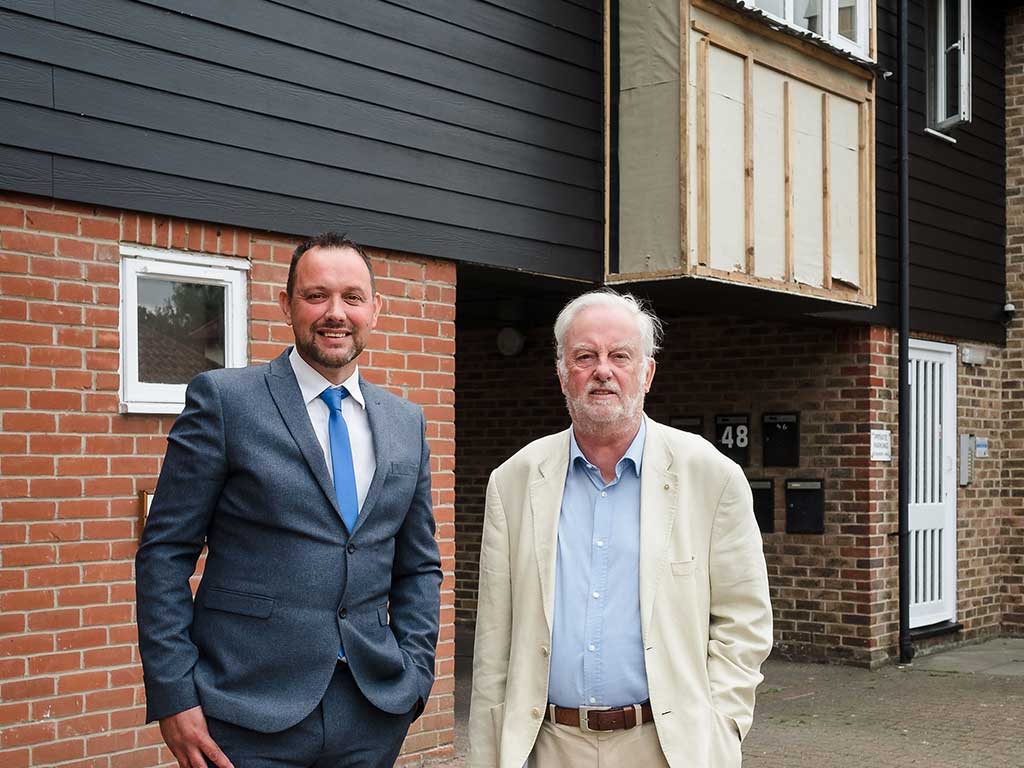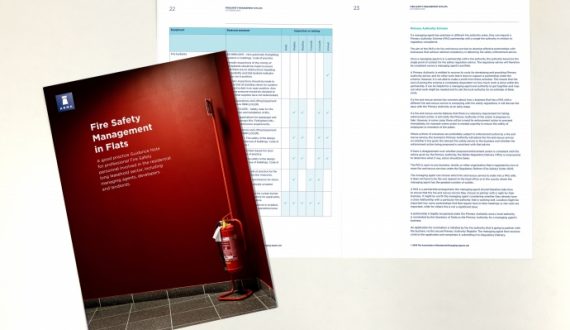Flat owners in Colchester have acted to reduce fire risks from decorative wooden cladding on their two and three-storey buildings.
Following the Grenfell Tower tragedy in 2017, the Government has recently offered funding support to replace combustible cladding on high-rise buildings, but low-rise buildings do not qualify.
Now a group of leaseholders in Nicholsons Grove, Colchester, supported by PMS Managing Estates, have found a solution.
Why is wooden cladding a problem on buildings?
Decorative wooden cladding was a design feature of many 1980s and early 1990s developments and the 119 flats and houses have external weather-boarding style detail on the bay windows, stairwells and flats over the integral garages.
Residents’ Management company Director Michael Poole explained they had built up reserve funds for planned external redecoration, but PMS Property Manager Grant Sutton suggested this could be used to replace the timber and reduce the fire risk.
Mr Poole, pictured right with Grant Sutton, said:
“PMS have been superb. Because of careful financial management, we have enough money in our funds to do the work.
“All the residents seem very happy. There’s been a lot of bad publicity about the risk of properties catching fire and residents being left with massive bills to remove cladding – but, through good management, we’ve been able remove the risk.”
Grant Sutton explained that, in addition to the fire safety concerns, flat owners across the country have faced issues selling their properties due to the refusal of mortgage lenders to provide funds without expensive fire assessments and the issue of EWS1 (External Wall Systems) certificates.
How have PMS helped leaseholders address issues with cladding?
Mr Sutton said: “Mortgage lender requirements for provision of EWS1 certificates has stalled a lot of sales of leasehold apartments. Rather than facing the expense of obtaining an EWS1 certificate, leaseholders at Nicholsons Grove are removing and replacing the timber cladding with a cement-based product called Hardieplank. It is identical to the previous cladding but is fire-proof.”
Work on the £27,000 project is underway, with completion expected by the end of September.
Managing Director of PMS Managing Estates, Daniel Malone, said:
“Widespread national publicity and government initiatives have rightly focused on high rise developments with combustible cladding following the Grenfell Tower tragedy.
“But residents of smaller blocks which don’t qualify for Government-backed funding can also address the fire risks associated with timber cladding through prudent use of their reserve funds, as the leaseholders at Nicholsons Grove have shown.”
A spokesperson from Essex County Fire and Rescue Service added: “Protecting our communities and preventing fire is our priority, and this is at the heart of our approach to reviewing the safety arrangements of buildings.
“Sadly, we all know that it’s taken the tragic events at the Grenfell Tower fire to highlight the dangers of flammable cladding and lead to legislation change. This is a national issue impacting many leaseholders across the country.
“The most effective and positive way forward is when we’re able to work with the responsible person to assess the risk and ensure they are taking necessary action both short and long term to rectify any changes that need to be made and keep their residents safe.”
____
Photo: Grant Sutton (left) and Michael Poole at Nicholsons Grove, where the timber cladding is in the process of being replaced. The black boarded section is the new cement-based replacement cladding.


